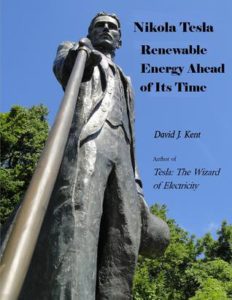 “Many a deluded inventor has spent years of his life in endeavoring to harness the tides.” – Nikola Tesla
“Many a deluded inventor has spent years of his life in endeavoring to harness the tides.” – Nikola Tesla
Anyone who has seen the tidal surge in the Bay of Fundy can envision the potential of harnessing the natural power of tides for electricity generation. And today some people are doing just that.
The basic principle is simple. Depending on where you are on the planet, either once or twice each day there is a rise and fall of ocean water we call tides. For any given location this ebb and flow is highly predictable; tide tables can be printed up years in advance. It is possible to build reservoirs to capture the water in rising tides, then during low tide allow that water to flow downward through power plants to generate electricity.
The most common mechanism for harnessing tidal energy is the tidal barrage, which looks like a dam or the locks in canals. Incoming tidal water is allowed to move freely upstream. At peak high tide the barriers are closed and the water shunted through turbines. Another modern option would be to set fixed direct drive turbines underwater in areas with large tidal flows. Other more speculative methods include building what in essence is a “tidal reef,” vertical-axis turbines, and even something called “push plates.” The benefit of tidal power, which Tesla would have appreciated, is that once the system is built the energy would be free, predictable, and naturally renewable. On the down side, which Tesla would also appreciate from experience, the initial development and construction is very expensive.
During Tesla’s time there were some engineers who looked at the potential of tidal-generated power with favor. Tesla was not one of them. In fact, he was rather disdainful in his dismissal of the attempts. “Many a deluded inventor has spent years of his life in endeavoring to harness the tides, and some have even proposed to compress air by tide or wave power for supplying energy,” he snorted. With an estimated “little more than one horsepower” possible over an acre of ground, Tesla felt that a “wave or tide motor would have but small chance of competing commercially” with other natural sources of energy. So here Tesla was in agreement with Lord Kelvin, one of the world’s most respected scientists during the late 19th and early 20th centuries, who had stated that “the tides cannot furnish any power worth speaking of.”
Tesla may have been correct in his assessment. Today, tidal power has been employed only in a small number of locations around the world. The first was located in La Rance, France; the largest is in South Korea. Prospective sites where tidal power would be financially feasible in the United States are few and while countries such as China, France, the UK, Canada and Russia may have greater number of feasible sites, until recently not much has been done to utilize this form of renewable energy.
In the end, Tesla was convinced that only “in exceptional locations can the power of the tides be profitably developed.” He would leave tidal power development for others to pursue. Tesla had other renewable resources on his mind.
[Adapted from my e-book, Nikola Tesla: Renewable Energy Ahead of Its Time, available on Amazon]
David J. Kent is an avid science traveler and the author of Lincoln: The Man Who Saved America, in Barnes and Noble stores now. His previous books include Tesla: The Wizard of Electricity and Edison: The Inventor of the Modern World and two specialty e-books: Nikola Tesla: Renewable Energy Ahead of Its Time and Abraham Lincoln and Nikola Tesla: Connected by Fate.
Check out my Goodreads author page. While you’re at it, “Like” my Facebook author page for more updates!










